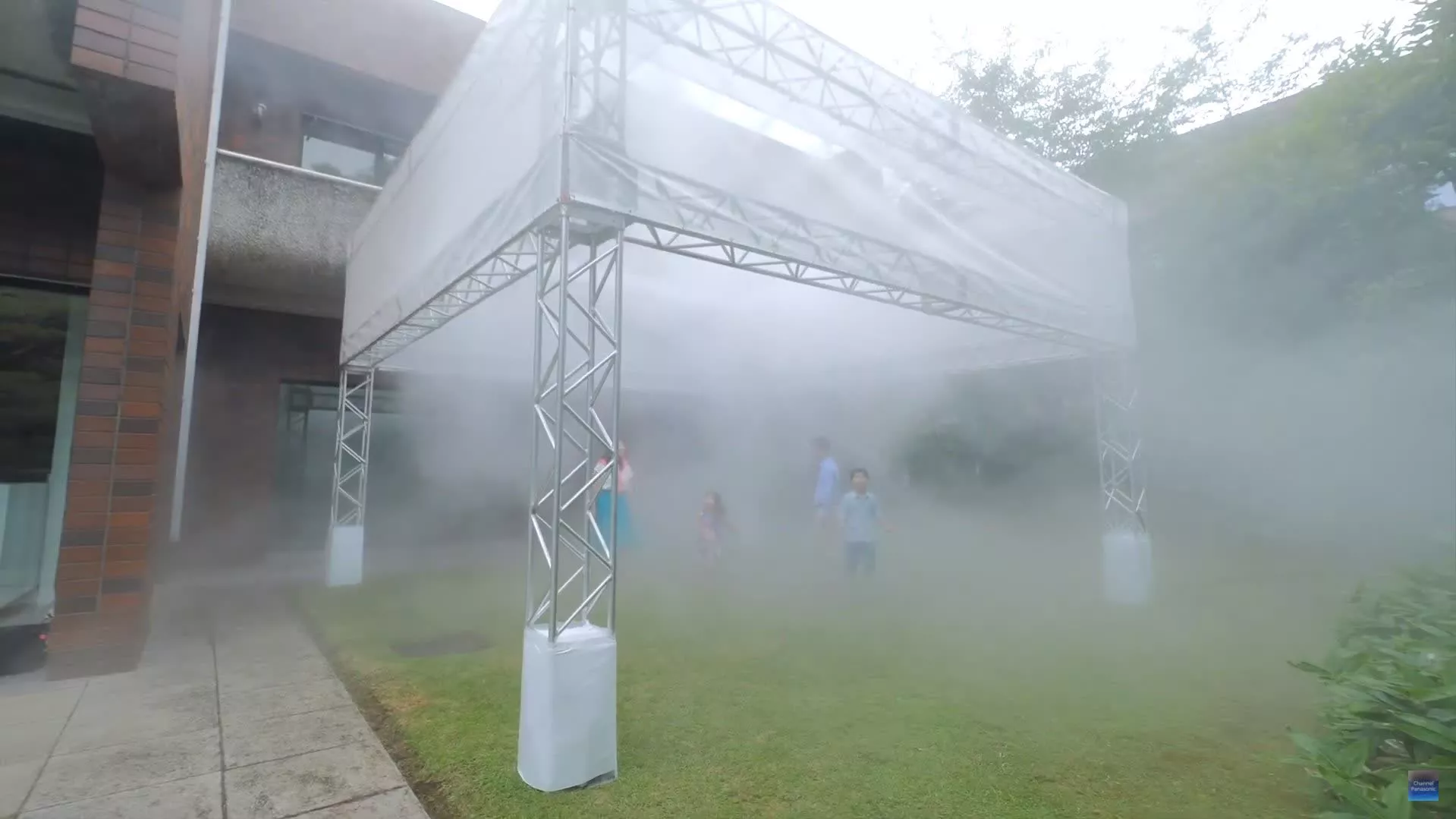
In brief: Those Princess Leia holograms seen in Star Wars still require some ingenious scientific breakthrough we haven’t quite cracked yet. But tech companies are becoming smarter, using existing technologies to create holographic effects. Panasonic is one of them, and has cleverly repurposed part of its outdoor cooling lineup to create a wild new visual display system that you can walk through.
Dubbed “Silky Fine Mist,” the technology was originally conceived as a way to beat the heat. But Panasonic quickly realized the creative possibilities.
The system uses high-pressure nozzles to spray a super fine mist of water droplets of around 6 microns in size, which the company claims is significantly smaller than naturally occurring fog particles. These “mist” particles evaporate quickly once in the air, taking the heat with them.

By combining this vapor with projections, Panasonic can generate 3D visuals that appear to float mid-air. It’s similar to projection mapping stunts used in theme parks by the likes of Disney, except instead of displaying on a solid surface, the visuals get beamed onto mist. You can even walk right through the holograms just like in the movies due to the lack of a solid medium. Just take a look at the demo video below.
Panasonic started toying with this idea for art installations and branding displays in 2018. Since then, the company has been bringing mist projectors to conventions and tech expos, dazzling attendees with swimming fish holograms, floating globes, and, of course, the obligatory corporate logo.
The demos are undeniably cool, but there are some practical limitations. The mist dispenser units are pretty bulky, with the smallest North American model weighing nearly 420 lbs and consuming over 2,000 watts of power. But then again, when was the last time you heard of a display that could also double up as an air conditioner?
The bottom line is that this technology offers one of the closest things we’ve got to real-life 3D visuals without resorting to spinning volumetric displays or angled glass tricks. Now we can only hope that brands don’t get too comfortable using the tech for annoying ads in public spaces.
 Print
Print


